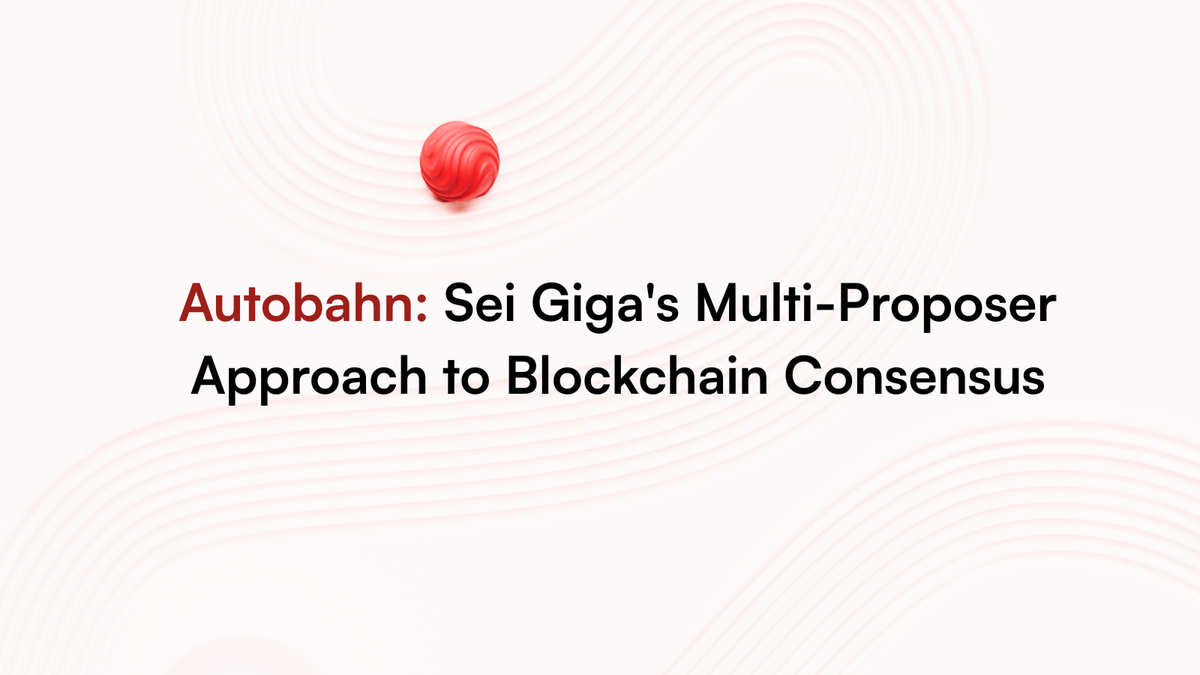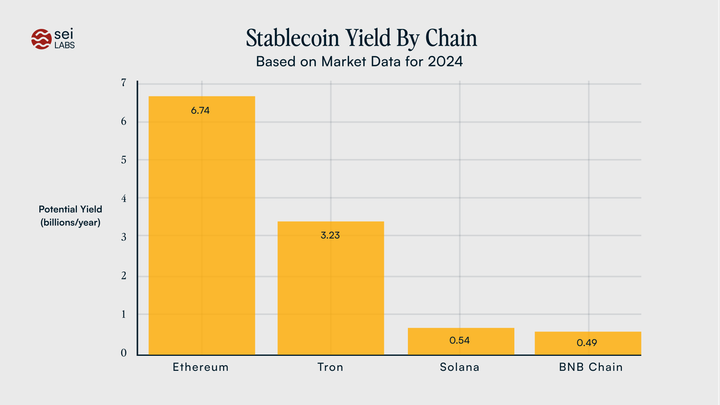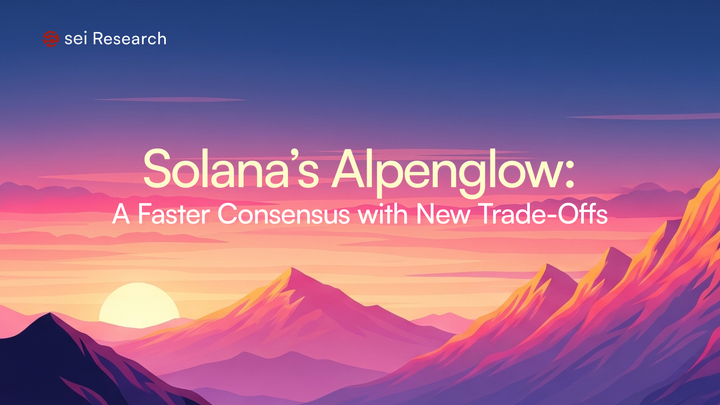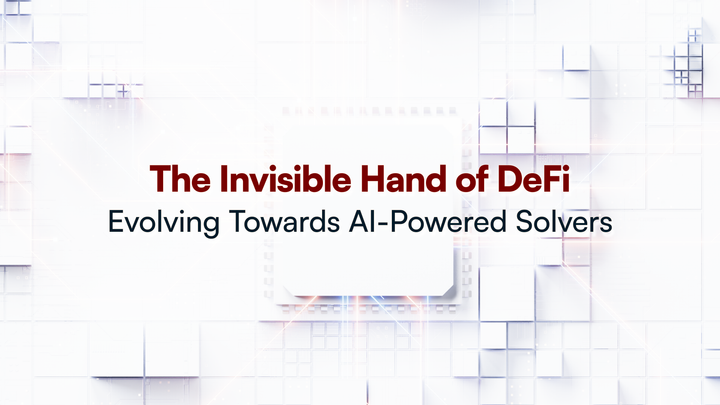Autobahn: Sei Giga's Multi-Proposer Approach to Blockchain Consensus

Introduction
Unlike earlier PoS designs, Tendermint offered deterministic guarantees for consensus and eliminated the possibility of forks, which became a very influential model for modern PoS blockchains. However it still faces throughput limitations due to its single-proposer architecture. Sei Giga is using the Autobahn consensus mechanism, which is based on a multi-proposer architecture, achieving 50x throughput improvement over Tendermint while maintaining Byzantine Fault Tolerance.
The Limitations of Single-Proposer Models
To understand Autobahn's innovation, we must first examine the traditional single-proposer model exemplified by Tendermint. In Tendermint, consensus follows a sequential process:
Steps:
- Proposing: Once a single block proposer (validator) is selected for a certain height, it builds a block and broadcasts it to all the other nodes.
- Pre-vote: Each node casts a pre-vote and listens until \(\frac{2}{3}\)+ pre-votes from validators' nodes have been submitted (block can be pre-voted as either pre-vote or nil if invalid/timedout). Once we reach \(\frac{2}{3}\)+ pre-votes for the same block we have a Polka.
- Pre-commit: Once a Polka is reached, validators submit a pre-commit block, otherwise they pre-commit nil. After they are broadcasted, they wait for +\(\frac{2}{3}\) pre-commits from their peers.
- Commit: The proposed block is committed to the blockchain, and a new height is created along with the new single block proposer.

This design creates several bottlenecks:
Proposer dependency: If the proposer is malicious or offline, the network must time out and restart with a new proposer.
Sequential processing: The steps are synchronous; each step has to be fulfilled before we move on to the next one, and we cannot make progress on future blocks until the previous one completes all steps.
Tight coupling: Data availability, and consensus are interdependent. The elected block proposer sends the rest of the nodes all the data of the proposed block including the raw transaction data so they can independently validate and verify it.

The entire network is forced to synchronize around a single proposer for every round which limits throughput regardless of network capacity or hardware improvements.

Autobahn’s Multi-Proposer Architecture
Sei Giga uses Autobahn as a consensus protocol which is based on a multi-proposer architecture where multiple validators can propose blocks simultaneously, achieving 50x throughput improvement over Tendermint while maintaining Byzantine Fault Tolerance.
Decoupling Data Availability from Consensus
In Tendermint and other classical BFT protocols, validators must download and verify the entire block data before voting on it. This tight coupling means:
- Consensus speed is limited by data dissemination speed and block size
- Large blocks severely impact latency
- The entire process stalls if data transfer is slow
Autobahn breaks this dependency by separating data availability from consensus:
- Data can be proposed and disseminated continuously and in parallel
- Consensus only needs to know data is available, not download it all immediately
- Execution can happen asynchronously after ordering is finalized
This decoupling allows the network to reach consensus on transaction ordering without being bottlenecked by data transfer or execution times, which increases throughput.
To implement this decoupled architecture, each validator maintains its own "lane" for proposing transactions. Proposals are chained sequentially within each lane and each proposal contains: position number, transaction batch, and reference to previous proposal. This enables parallel data dissemination without waiting for global consensus on each proposal.
The key mechanism enabling the decoupling is the Proof of Availability (PoA).
When a validator proposes a batch, others can vote on its availability without downloading the entire data.
Once a proposal receives \( f+1 \) votes (where f is the maximum number of faulty nodes tolerated), a PoA is created. This certifies that at least one honest validator has the data and can serve it on request.
The PoA system allows consensus to proceed with just lightweight proofs rather than heavy data transfers, moving full data synchronization off the critical path.
Consensus Layer (Tip Cuts)
Instead of reaching consensus on individual blocks, Autobahn periodically takes a “snapshot” of the network:
- A designated leader collects the latest certified tips from all lanes
- These tips are bundled into a "cut" proposal
- Validators vote on this cut through a streamlined two-phase protocol
- Once committed, a cut implicitly orders all proposals in all lanes up to their respective tips
This way, many proposals can be ordered with a single consensus decision.

Key Advantages of Decoupling Data Availability from Consensus
Massively Parallel Data Processing
Multiple validators simultaneously propose transactions in their respective independent lanes. Data dissemination happens in parallel rather than sequentially, and the system isn't bottlenecked waiting for a single proposer to assemble and disseminate a block. The network can fully utilize available bandwidth from multiple nodes simultaneously.
Lightweight Data Availability Requirements for Consensus
Since consensus only needs proofs that data is available (not the data itself). Messages exchanged during consensus are small and fast to transmit and the tip cut mechanism amortizes consensus costs across many more transactions.
Asynchronous Data and Execution Pipelines
Decoupling enables fully pipelined operations. Validators can fetch transaction data asynchronously, off the critical path of consensus, and execution can occur after ordering is finalized without slowing consensus. This allows Sei Giga to achieve high throughput even with complex EVM transactions.
Enhanced Censorship Resistance
The multi-proposer design provides structural resistance to censorship. In a single-proposer system, a malicious proposer can temporarily censor transactions, as opposed with multiple concurrent proposers, transactions have many paths to inclusion. A transaction rejected by one validator can always be included by others.
Reduced Communication Overhead
The optimized protocol reduces communication requirements. Sei Giga achieves consensus in just 1.5 roundtrips (compared to 3 in Tendermint) and it uses efficient pipelining of consensus steps. Communication between nodes primarily occurs about transaction ordering rather than bulky data transfers.
Conclusion
Sei Giga brings 50x higher throughput than Tendermint while keeping the same security guarantees. It achieves this by utilizing the Autobahn consensus mechanism which decouples data availability from consensus.
Join the Sei Research Initiative
We invite developers, researchers, and community members to join us in this mission. This is an open invitation for open source collaboration to build a more scalable blockchain infrastructure. Check out Sei Protocol’s documentation, and explore Sei Foundation grant opportunities (Sei Creator Fund, Japan Ecosystem Fund). Get in touch - collaborate[at]seiresearch[dot]io
References:



